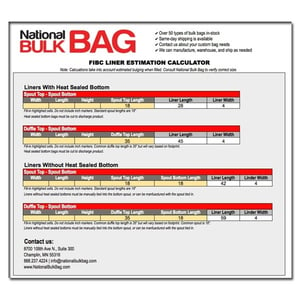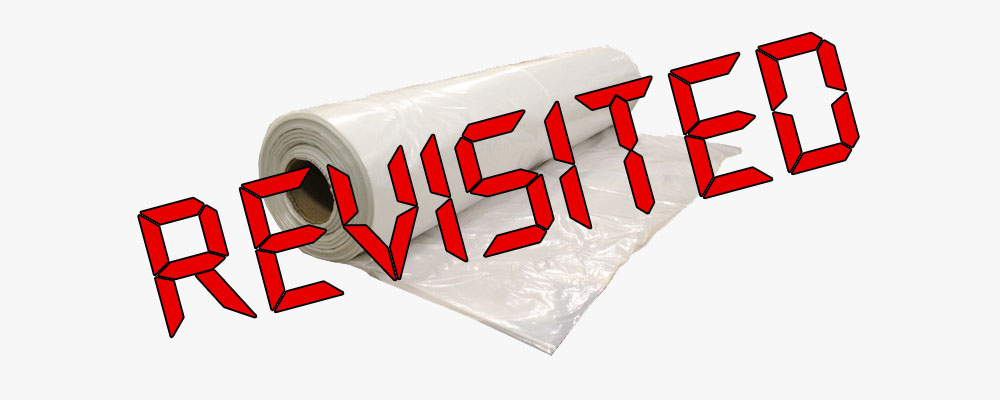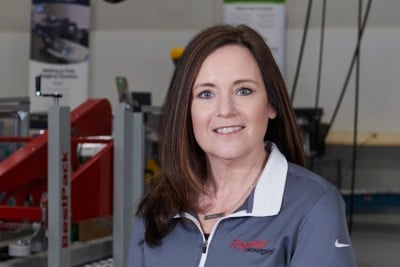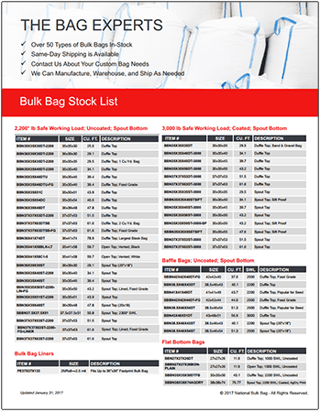FIBC liners is a core topic on the National Bulk Bag blog. In fact, if you click here you can check out all of the great content we’ve written on liners. However, because we’ve covered the various types, uses, constructions and material types over a long period, a lot of our content is scattered through many blogs.
At NBB, we’re constantly learning about new products, industry trends, and uses in the FIBC industry and we’re passionate about sharing those with our site visitors. It’s important to us to be constantly updating our knowledge base – even on topics we’ve covered extensively. This is why we decided it was time to consolidate all of the info we have on liners into this comprehensive post.
The Construction Types of FIBC Liners
Gusseted Liners
Also referred to as standard or lay-flat liners, gusseted liners are the most common type of FIBC liner. They are cylindrical in shape, open at the top with a heat-sealed bottom (that is cut during discharge). Gusseted liners can be purchased pre-inserted into the bag or purchased separately in rolls to be inserted later.
Tubular Liners
Tubular liners are made of the same polyethylene materials as other liners like gusseted, form fit, etc. Typically, tubular liners are pre-inserted into the bag before leaving the manufacturing facility. The single biggest distinctive structural attribute that tubular liners have is the opening at the bottom of the liner. In a standard liner (gusseted), the bottom of the liner is sealed shut and then cut for proper discharge. In a tubular liner, there is no bottom seal to cut. The end of the liner is simply fed through the discharge spout and tied during manufacturing preventing the need to feed and cut the liner during discharge.
Form Fit Liners
Form fit liners are designed and manufactured to take the exact form of the bag they are placed in – including the top and bottom construction (spout, duffle, etc.). Their “form-fit” shape allows for superior performance during filling and discharge as the liner will not form folds, pleats and/or other traps that can slow down the filling/discharge of materials.
Baffle Liners
Baffle liners are manufactured with built in baffles. Baffled liners are very similar to FIBCs; however, the baffle is built into the actual liner instead of the bag itself. They are also form fit to the bag they are pre-inserted into and therefore cannot be solid individually. The baffles of the liner help the bag maintain a square shape and help counteract the outward push of the product. This square shape makes them more stable during storage/transportation as well as provides extra support for stacking.
The Different Materials Types
Polyethylene
Polyethylene liners (often referred to as poly liners) are the standard in the bulk bag industry. Most liners used and consumed are made of polyethylene. Common in the food and chemical industries, these liners have becoming increasingly popular as the bulk bag industry has expanded. Poly liners are very useful when additional protection is required, fine powders being stored/transported in the bag, and/or with other sensitive materials like food or chemicals*.
*these are just some of the many applications of liners. Contact your distributor with any questions about the application of bulk bag liners.
Aluminum
Also referred to as foil liners, form shaped aluminum liners improve filling, discharging and the handling/stability of the bulk bag’s walls. Aluminum liners are made of aluminum-laminated films that provide additional protection to the product in the bag. Depending on the specific product and/or application, each liner can be manufactured using various aluminum compounds. Foil liners offer superior protection against moisture and UV degradation and are compatible with a wide variety of bags.
Polypropylene
For more information about polypropylene liners, check out this blog – “What Are Polypropylene Liners” by clicking here.
 Thanks for Reading!
Thanks for Reading!
Thanks for reading our post on four common uses for FIBC liners! We hope you found this post both helpful and informative.
Finding the right polyethylene liner for your product and application can be difficult. Not only is it important to determine the right type of liner for your product and application, it is imperative that you also determine the correct size of liner for the specific bag you are using.
To accurately determine what size polyethylene liner is right for the bag you are using or are interested in, download our Liner Estimation Calculator by clicking the button below!






